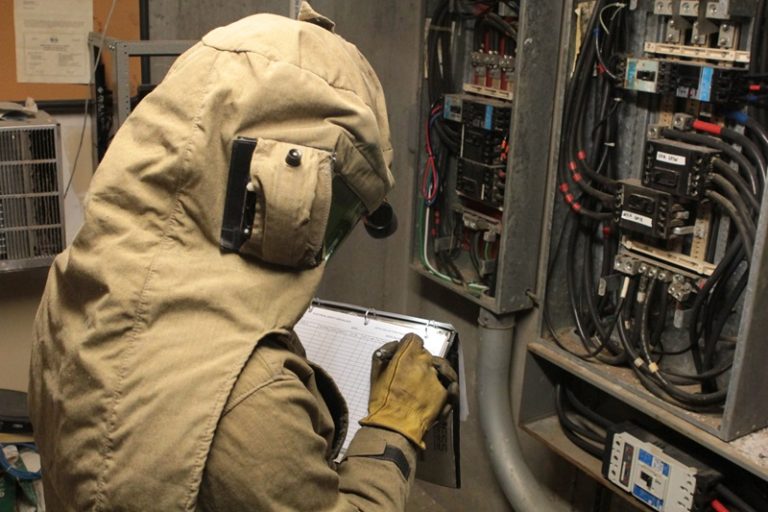
compliance; it’s about creating a safer, more efficient workplace. In today’s fast-paced industrial environment, safety and efficiency are paramount. An arc flash, a sudden release of electrical energy through the air, can cause severe injuries, damage equipment, and lead to costly downtime. To mitigate these risks, an arc flash study is essential.
The Arc Flash Study Process
An arc flash study involves a detailed assessment of your facility’s electrical distribution system. The process typically includes the following steps:
- Data Collection: Engineers gather detailed information about your electrical systems, including equipment ratings, protection device settings, and system configurations.
- System Modeling: Using specialized software, the collected data is modeled to simulate different electrical fault scenarios. This helps in understanding how the system would behave under various conditions.
- Fault Current Calculation: The study calculates the available fault current, which is the current that flows during a short circuit or other fault condition.
- Arc Flash Hazard Analysis: This step determines the potential energy release during an arc flash event. It also calculates the incident energy levels that workers might be exposed to and the required personal protective equipment (PPE).
- Protective Device Coordination: The study ensures that all protective devices are set correctly to minimize the risk of an arc flash and adequately protect the system.
- Labeling: Electrical equipment is labeled with arc flash warning signs after the analysis, indicating the potential hazard and required PPE.
- Report and Recommendations: Finally, a comprehensive report detailing the findings and offering recommendations for improving safety and system reliability is provided.
Benefits of an Arc Flash Study
- Accident Prevention: The primary goal of an arc flash study is to prevent accidents. Understanding the risks and implementing the right protective measures can significantly reduce the likelihood of arc flash incidents, keeping your employees safe.
- Compliance with Safety Standards: An arc flash study ensures compliance with OSHA and NFPA 70E regulations. This avoids potential fines and legal issues and demonstrates your commitment to workplace safety.
- Operational Efficiency: A well-conducted arc flash study can lead to improved system performance. By identifying weak points and optimizing protective devices, the study can enhance the overall efficiency of your electrical system, reducing downtime.
- Cost Savings: Preventing accidents and minimizing downtime leads to significant cost savings. The investment in an arc flash study is far outweighed by the potential costs of accidents, equipment damage, and lost productivity.
- Employee Confidence: Knowing that their safety is a priority boosts employee morale and confidence. A safe work environment fosters a culture of trust and productivity.
Electrical Safety Specialists offers nationwide services, including arc flash studies, electrical safety training, arc flash risk assessments, and arc flash training.
